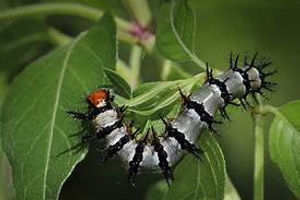top of page
Butterfly populations are a very good indicator of the health of an area's ecosystem !!
Also known as the Janais Patch
Adult Chlosyne janais inhabit the periphery of lowland tropical to subtropical forests, fields, and along streams, where they feed on flower nectar.
They feed primarily on Acanthus shrubs, especially Anisacanthus wrightii and Odontonema callistachus (in Texas), upon which adult females also lay their eggs.
They can reach high numbers in the Rio Grande Valley, but the population is periodically killed off by cold snaps. The area is then recolonized by migratory members of the Mexican population.
Although reproduction is continuous in the tropics, in temperate areas several broods are produced from July to November.
The dorsal and ventral wing surfaces are black with several undulating rows of small white spots on the medial forewings and along all outer wing margins.
On each dorsal hindwing is a medial orange red patch situated anteriorly.
The ventral hindwings have a fragmented yellow proximal patch bordered by a thick postmedial band of red that does not reach the wing margins.
* As members of the Brush Footed (Nymphalidae) family, they use their shorter pair of front legs for feeding, and their two pairs of longer rear legs for propulsion.

Diet: caterpillars feed on the undersides of leaves. (Younger caterpillars are gregarious feeders.)
Diet: adults take nectar from assorted flowers
Avg. wingspan: 4.8 - 6.7 cm / 1.89 - 2.63 “
Family: Nymphalidae

The single biggest threat to butterfly survival is habitat destruction!!
bottom of page



